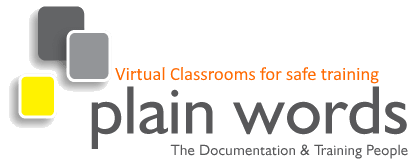Training Bulletin Issue 76
How exactly do you structure written information?
This is something that comes up on nearly every training course we give. Clearly, it's important, and documents are often criticised for poor structure. But if you ask people what they actually mean by structure, you tend to get vague looks and a lot of hand-waving: “You know, how it's organised…how it's laid out…the beginning, the middle and the end…”
These answers are partly right, but not completely and not very clear. If you can't define a question clearly in the first place, how can you answer it? So let's start with a working definition of structure. In relation to written information, structure is about how you group your content into meaningful topics, and the logic by which you sequence those topics. There may be further refinements, such as ensuring your structure is balanced by having the content evenly grouped rather than a lot clumped into one section and much less in others. But on the whole, if you consider grouping and sequencing as the main areas you need to deal with, you have a way to address the problem.
Great: so how do we use this stunning insight to structure our writing?
Well, it depends
Oh dear. It's never good when that's the reply to your question. But thinking about this makes it easier, not harder, to structure. It depends on the kind of information you are working with, and this is why structure is a perennial problem: no one answer is right all the time. Consider a conversation between three people, with each of them interjecting as things occur to them. If you had to take notes of this then the most obvious structure would seem to be chronological: just write down what they said, in the order in which they said it.
However, if your conversation was people representing three different departments discussing a project and brainstorming possible problems, then it might make more sense to group their points by department rather than by the order in which they thought of them. Or even by the severity of the possible problems they identified, from absolute show-stoppers down to more minor issues.
Some options
The classic
Tell them what you're going to tell them, then tell them in detail, then tell them what you told them.
STAR
- Situation or Scope – what was the problem that led to writing this document? What does this document address?
- Target – what is the outcome we were looking for? What did the document have to achieve?
- Action – what did we actually do? (or Analysis – what did we learn?)
- Result or Recommendation – and where do we go now?
Order of Importance: most important first
What is the most recent development or the most important thing you want your reader to know? Then go into the background or the factors that led to the situation. This is how newspapers write stories. This works for readers who already know something about the issue and who will probably only skim read your document.
Order of Importance: background first
Choose this if the issue is unfamiliar or new to most of your readers, and if they won't understand your conclusions without being told the context.
By area/topic/department/product/location…
Are you reporting on a range of areas? Break your content down by area and ensure that each main topic has the same subsections, in the same order.
And the detail
Your layout should support your structure, using headings and bullets. Structure your paragraphs with the most important points first rather than in the middle or end because skim readers tend only to read the first line.
Structure your sentences using the active voice and try to put key words that will grab the reader's attention towards the beginning of each line.
Want to know more?
This is a big topic and structure can make or break your document. Readers who have to deal with a lot of written input lose patience quickly with anything structured so poorly they can't find what they need or where the internal logic doesn't make sense to them. If you need to produce coherent reports with content that meets the requirements of different readers, consider our report writing courses:
- Structuring & Writing Reports for staff whose roles have not previously required them to do much report writing
- Business & Report Writing for Managers for more experienced report writers who want a recap of the basics, raise their game, and for organisations whose reports need to become more consistent.
- We can also create bespoke training that addresses your specific needs.
Contact us on , or call +44(0)1235 60 30 22 if you'd like to discuss what we can offer.

